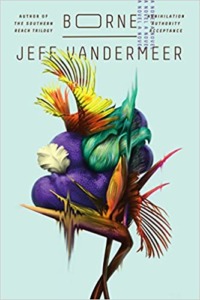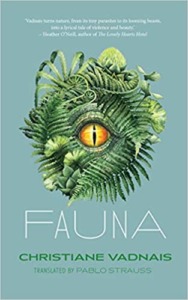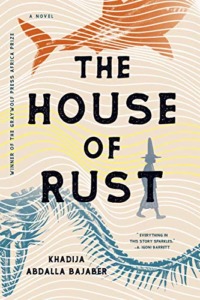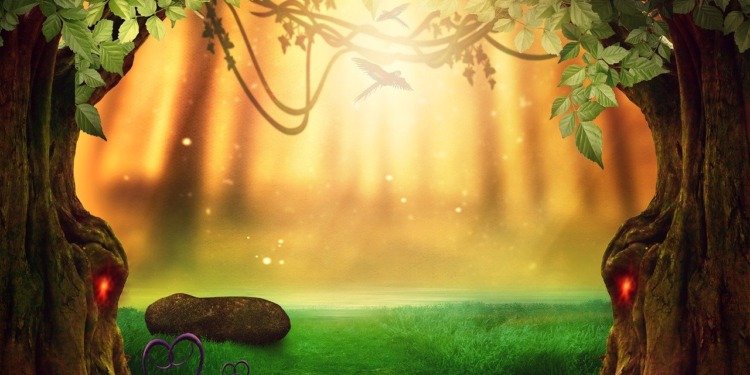First, a quick definition: Eco-fiction is made up of fictional tales that reflect important connections, dependencies, and interactions between people and their natural environments. Sometimes people are even left out altogether, resulting in purely ecological story webs. The genre is evolving along with the changes in our world, including newer and more accepted scientific findings, such as climate change.
 The term may have first appeared in John Statler’s anthology Eco-fiction, (Pocket, published in 1971) which re-printed environmental sci-fi short stories from the 1930s-60s.
The term may have first appeared in John Statler’s anthology Eco-fiction, (Pocket, published in 1971) which re-printed environmental sci-fi short stories from the 1930s-60s.
You might not have ever heard of this anthology, but you’re probably aware of some of the stories therein, such as British horror writer Daphne du Maurier’s “The Birds,” which became a famous Alfred Hitchcock film (released in 1963). You would also recognize many other authors in this anthology: Ray Bradbury, John Steinbeck, Edgar Allan Poe, Kurt Vonnegut Jr., Sarah Orne Jewett, Frank Herbert, J.G. Ballard, Isaac Asimov, and William Saroyan.
Eco-fiction really took off in the early 1970s, when natural history and the humanities began to intersect more, such as with ecocriticism, born out of the idea of a “literary ecology”. But it had in fact deeper roots, going back to Rachel Carson’s iconic Silent Spring in 1962 that acted as a wake-up call for many baby boomers.
Jim Dwyer’s Where the Wild Books Are: A Field Guide to Eco-Fiction (University of Nevada Press, 2010) was a great guide and resource as it explored hundreds of novels from around the world, academically explained the genre, gave dignity to BIPOC authors before the term ever came about, and was slightly ahead of its time in recognizing climate change in fiction.
 In his guide, Dwyer cites Professor Mike Vasey, San FranciscoState University’s Estuary and Ocean Science Center, who gives a simple definition of the genre:
In his guide, Dwyer cites Professor Mike Vasey, San FranciscoState University’s Estuary and Ocean Science Center, who gives a simple definition of the genre:
“Stories set in fictional landscapes that capture the essence of natural ecosystems…[They] can build around human relationships to these ecosystems or leave out humans altogether. The story itself, however, takes the reader into the natural world and brings it alive.”
Where do I find novels in this genre?
The simple answer is everywhere.
Dwyer noted that eco-fiction was not exclusive nor only realist or Earth-based. It includes all sorts of speculative fiction, such as weird fiction, fantasy, and science fiction. It’s also covered in the major genre categories such as literary, mystery, thriller, historical, romance, and contemporary. It can be dystopian or utopian. It can be apocalyptic. It can be realistic or fantastical. It can reflect post-colonial trauma, including that of the people and the land.
Of course, newer literary genres have come about since then, including climate, Anthropocene, and solarpunk fictions. All share bonds that tie authors and readers together.
Where should you start?
I’ll mention here only some of my favorites, but lists are never exhaustive and will inherently miss many important novels and authors, so for that, I apologize in advance.
My goal is to introduce readers to some novels within this literary ecology—consider it a starting place.
 When I think about what draws me to a story in this genre, I think of Wai Chee Dimock’s words (she is a professor of English and American studies at Yale) when reviewing Jeff VanderMeer’s Borne: A Novel in the New York Times):
When I think about what draws me to a story in this genre, I think of Wai Chee Dimock’s words (she is a professor of English and American studies at Yale) when reviewing Jeff VanderMeer’s Borne: A Novel in the New York Times):
“This coming-of-age story signals that eco-fiction has come of age as well: wilder, more reckless and more breathtaking than previously thought, a wager and a promise that what emerges from the 21st century will be as good as any from the 20th, or the 19th.”
When Borne was published in 2017, it was a Financial Times book of the year, an Amazon Editors’ pick and selected by AMC in 2019 to be turned into a TV series.
I’ll invite you to discover such stories, the wilder, the more reckless, and the more breathtaking, the ones that take the reader into the natural world and bring it alive.
Five eco-fiction novels
It’s hard to find such lists without authors like Kim Stanley Robinson, Octavia Butler, Ursula K. Le Guin, Jeff VanderMeer, Margaret Atwood, Barbara Kingsolver, and many others.
Because they’re often included on many recommendation lists for ecological genres, I’ve decided to go off the path and head mostly outside of North America to visit other places where I’ve found similarly inspiring authors.
Fauna by Christiane Vadnais (Coach House Books, September 2020)
 Beautifully translated from the French by Pablo Strauss as Vadnais is a Quebec author, this is a collection of intertwined short stories taking place in the far future and far north.
Beautifully translated from the French by Pablo Strauss as Vadnais is a Quebec author, this is a collection of intertwined short stories taking place in the far future and far north.
An atmospheric book, it takes the reader into Shivering Heights, a deep forest, a foreboding lake, and other places where mood, natural history, and poetics come crawling out of the soil to awaken us.
A speculative tale of end times and climate change, this read has flora and fauna leaping alive and taking our breath away.
House of Rust by Khadija Abdalla Bajaber (Graywolf Press, October 2021)
 Khadija Abdalla Bajaber is a young Kenyan poet and journalist, and winner of the first Graywolf Press Africa Prize in 2018; this is a coming-of-age story about a strong-willed but vulnerable Hadhrami girl, named Aisha, who lives in Mombasa, the town where Bajaber herself was born.
Khadija Abdalla Bajaber is a young Kenyan poet and journalist, and winner of the first Graywolf Press Africa Prize in 2018; this is a coming-of-age story about a strong-willed but vulnerable Hadhrami girl, named Aisha, who lives in Mombasa, the town where Bajaber herself was born.
Aisha goes on a fantastical journey to find her father, who her grandmother is convinced is dead. He is/was a fisherman, and the sea envelopes the plot and characters, including several Alice-in-Wonderland-like creatures that Aisha must contend with.
This is a classic magic realism novel that left me entranced.
The House of Drought by Dennis Mombauer (Stelliform Press, coming out July 14, 2022)
Taking on aspects of the weird, Mombauer’s novella takes place across time at a haunted house in Sri Lanka that borders woodland and farmlands.
Something strange is happening, and the author seemingly creates new mythological creatures that may illustrate parables in the age of climate change.
It might be just my take, but the eerie house seems to represent our planet. We’ve only got one, so it’s best to take care of it now.
Bangkok Wakes to Rain by Pitchaya Sudbanthad (Sceptre, February 2019)
An epic novel traveling through time in which multiple characters intersect in one of the most watery cities in the world: Bangkok.
This novel proves that stories about our ecological surroundings can still be about the human, our varied histories and time on Earth, and our interconnections with each other as well as how the environment shapes us.
Sudbanthad takes us through time and doesn’t ignore the future of a city that is sinking. He is a Thai writer who splits his time between Bangkok and Brooklyn, New York, and was named a Fellow in Fiction by the New York Foundation for the Arts in 2018. Here is a video interview in which he explains his book:
Fever Dream by Samanta Schweblin (Oneworld Publications, March 2017)
Schweblin is an Argentine Spanish-speaking author currently living in Berlin; this is her first book translated into English, but she achieved international fame earlier, in 2010 when Granta magazine selected her as one of the best Spanish language authors under 35.
Taking place in Argentina, Fever Dream features a long dialog between a woman and her friend’s son. By bits and pieces, we understand that sickness is traveling throughout the community from poisons in a nearby stream.
It’s an unsettling novel that weaves nature, friendships, family, and memories into back-and-forward-flashes that surreally mimic a fever dream. The excellently adapted movie also came out in September 2021.
What all five books have in common is that, beyond being unusually good reads, they leave you asking questions once you’ve read the last page: What have we done to Nature, where are we, humans, going with this, and what should we do? These are necessary questions to ask but only good literature can bring them up with the needed urgency – and all the while, giving us the simple pleasure of reading.
Editors Note: The opinions expressed here by Impakter.com columnists are their own, not those of Impakter.com — In the Featured Photo: Photo by Darkmoon_Art from Pixabay, Italy (cc)










